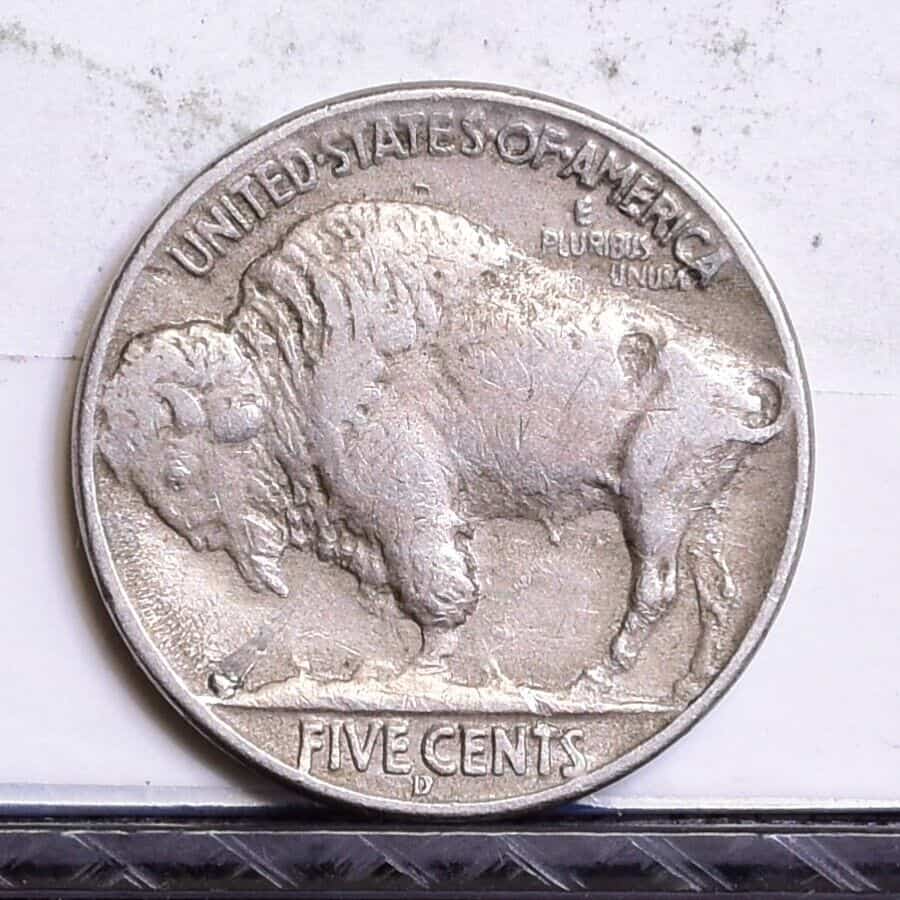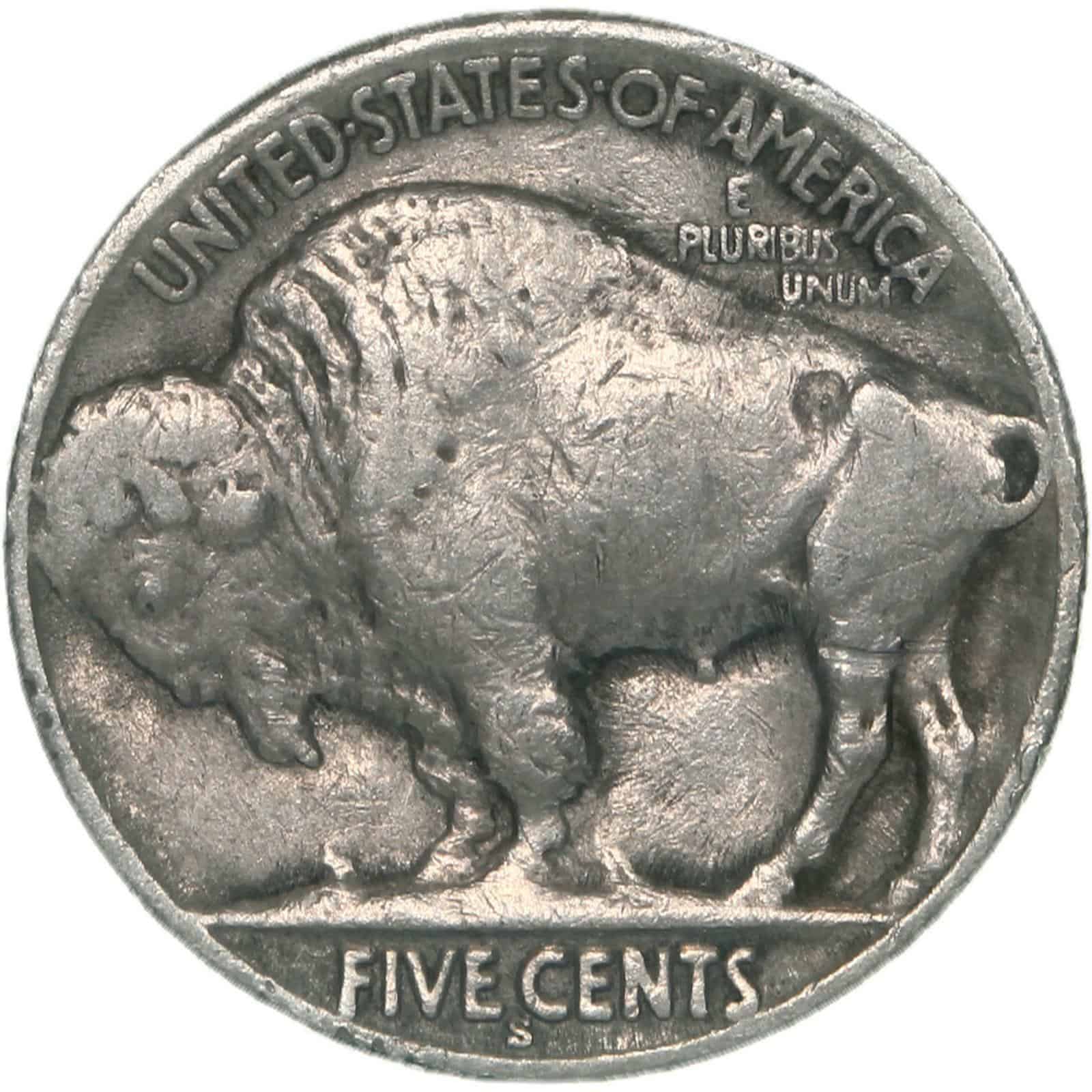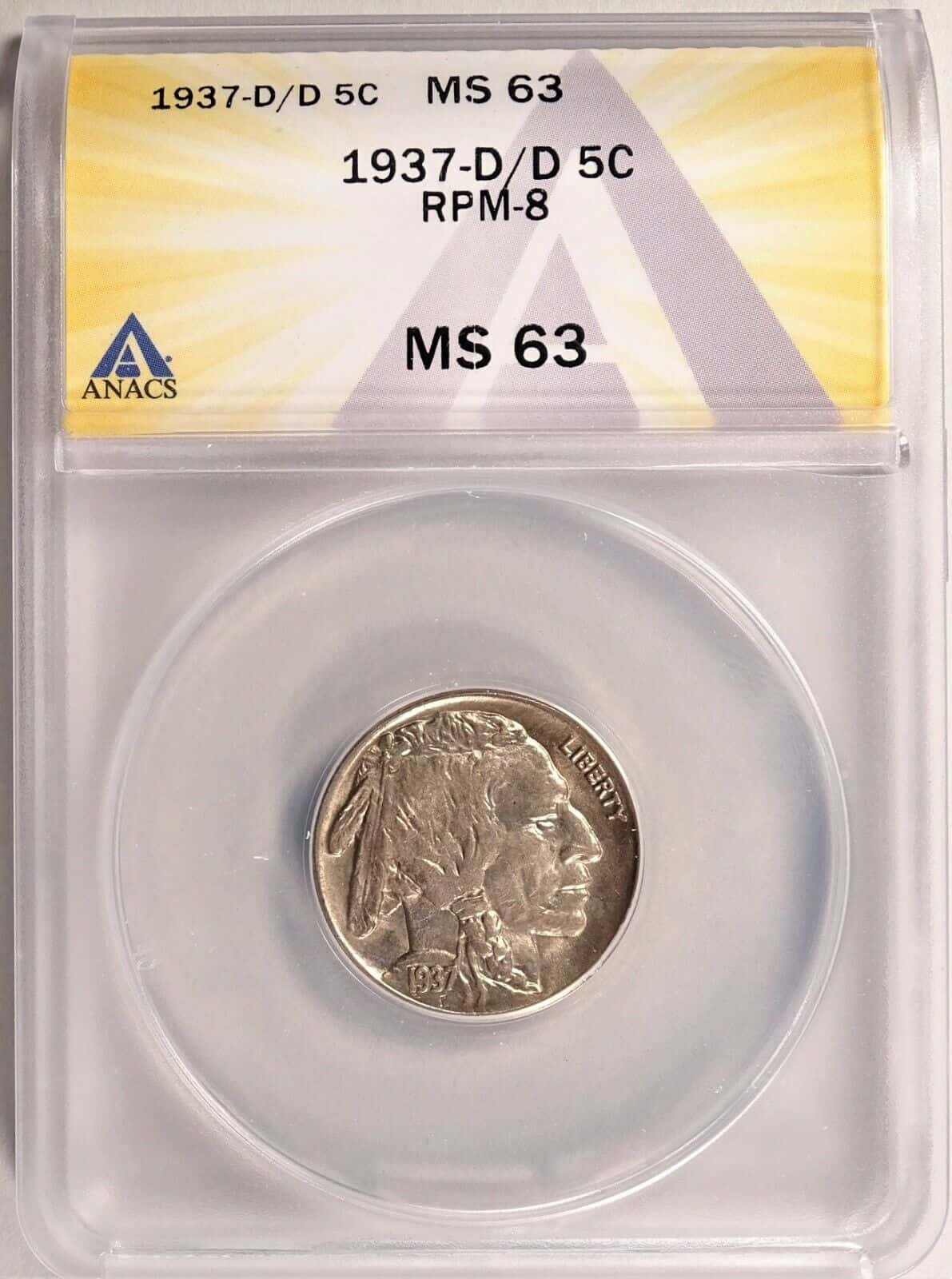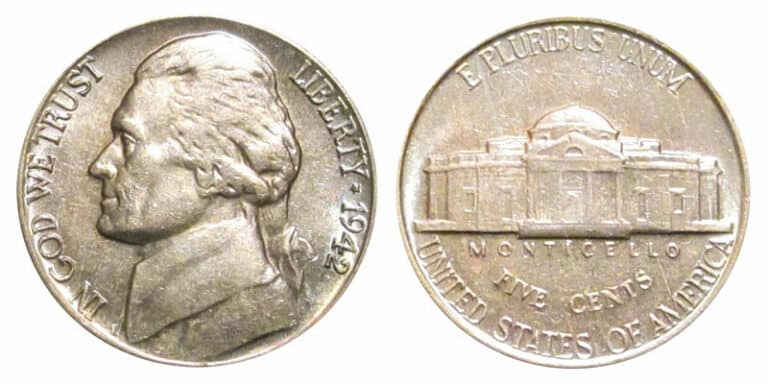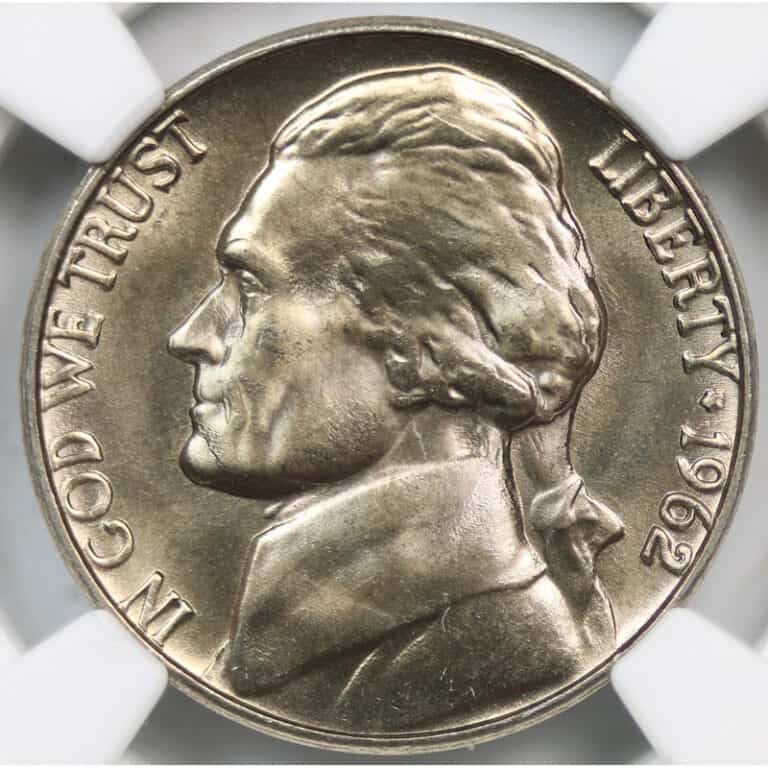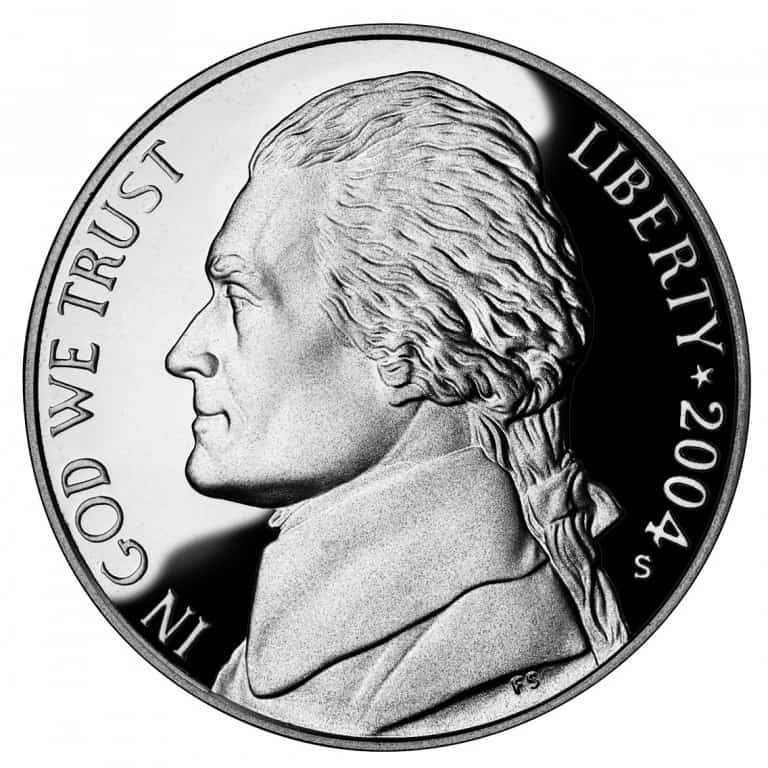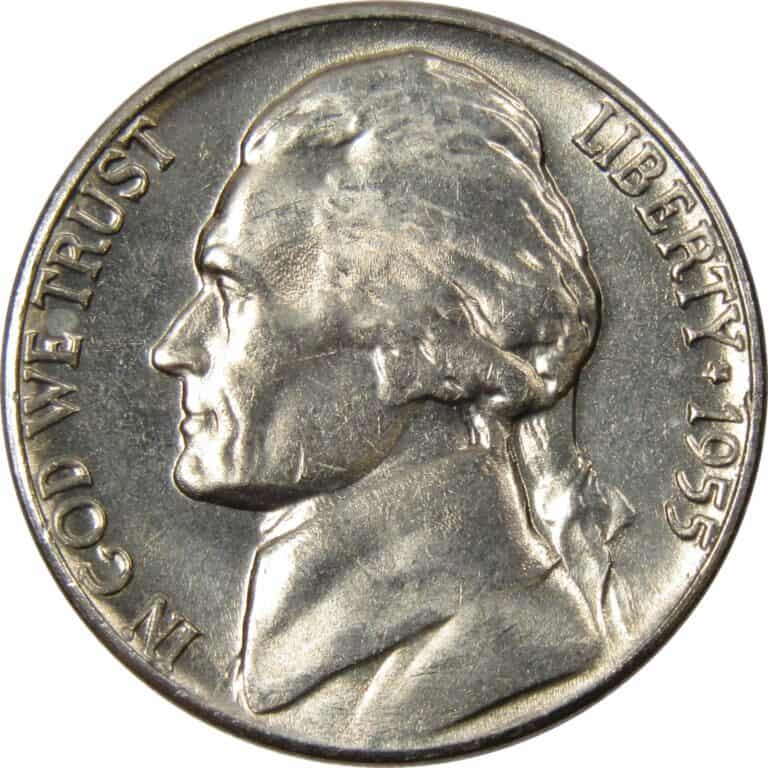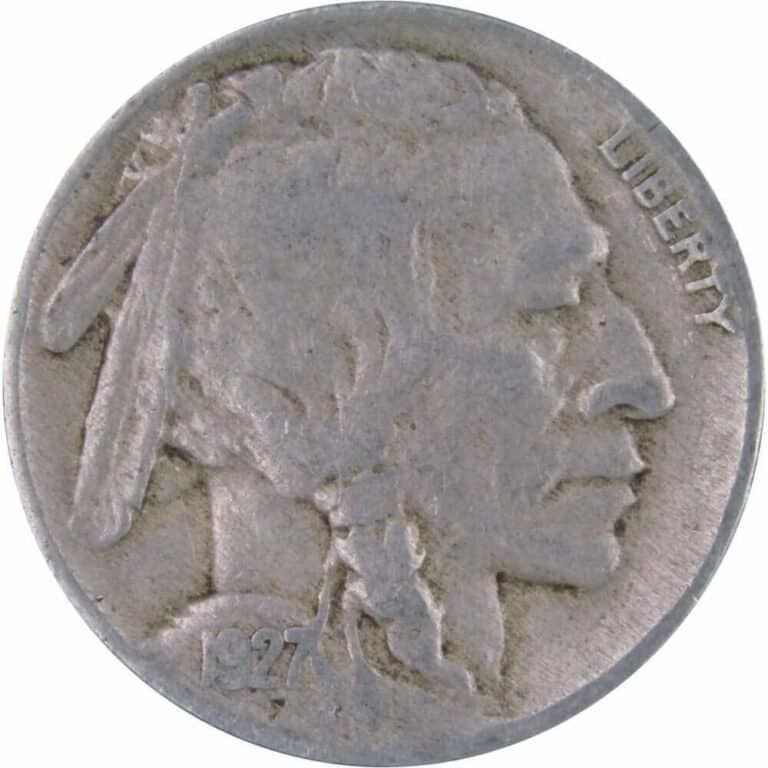1937 Buffalo Nickel Value: How Much Is It Worth Today?
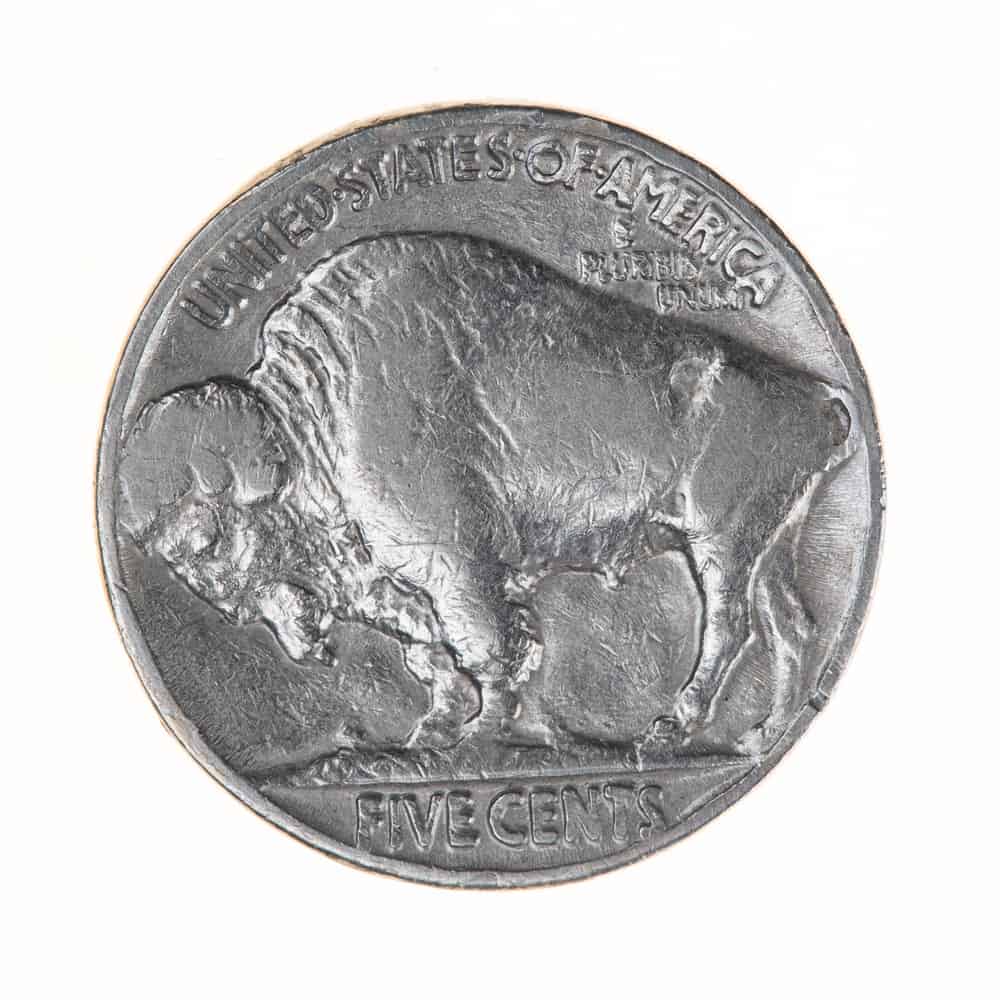
Figuring out the 1937 buffalo nickel value is important if you hope to make any substantial money collecting these coins. Fortunately, this is not rocket science and you don’t need to get classes to learn this.
You just have to read this post. In it, we’re going to teach you all you need to know about this coin’s price and the factors that affect it. To make you all rounded, we’ll even tell you about the coin’s history, varieties, and possible errors.
1937 Buffalo Nickel Value Chart |
|||
| Grade | 1937 No Mint Mark Buffalo Nickel (P) Value | 1937 “D” Buffalo Nickel Value | 1937 “S” Buffalo Nickel Value |
| G4 | $1.46 | $1.46 | $1.46 |
| VG8 | $1.75 | $1.75 | $1.75 |
| F12 | $2.05 | $2.05 | $2.05 |
| VF20 | $2.33 | $3.38 | $3.38 |
| EF40 | $3.38 | $4.63 | $6.81 |
| AU50 | $10 | $11 | $10 |
| MS60 | $30 | $30 | $30 |
| MS65 | $75 | $100 | $90 |
| MS68 | $9,000 | $22,500 | $20,000 |
| PR63 | $1,200 | _ | _ |
| PR69 | $42,500 | _ | _ |
1937 No Mint Mark Buffalo Nickel (P) Value
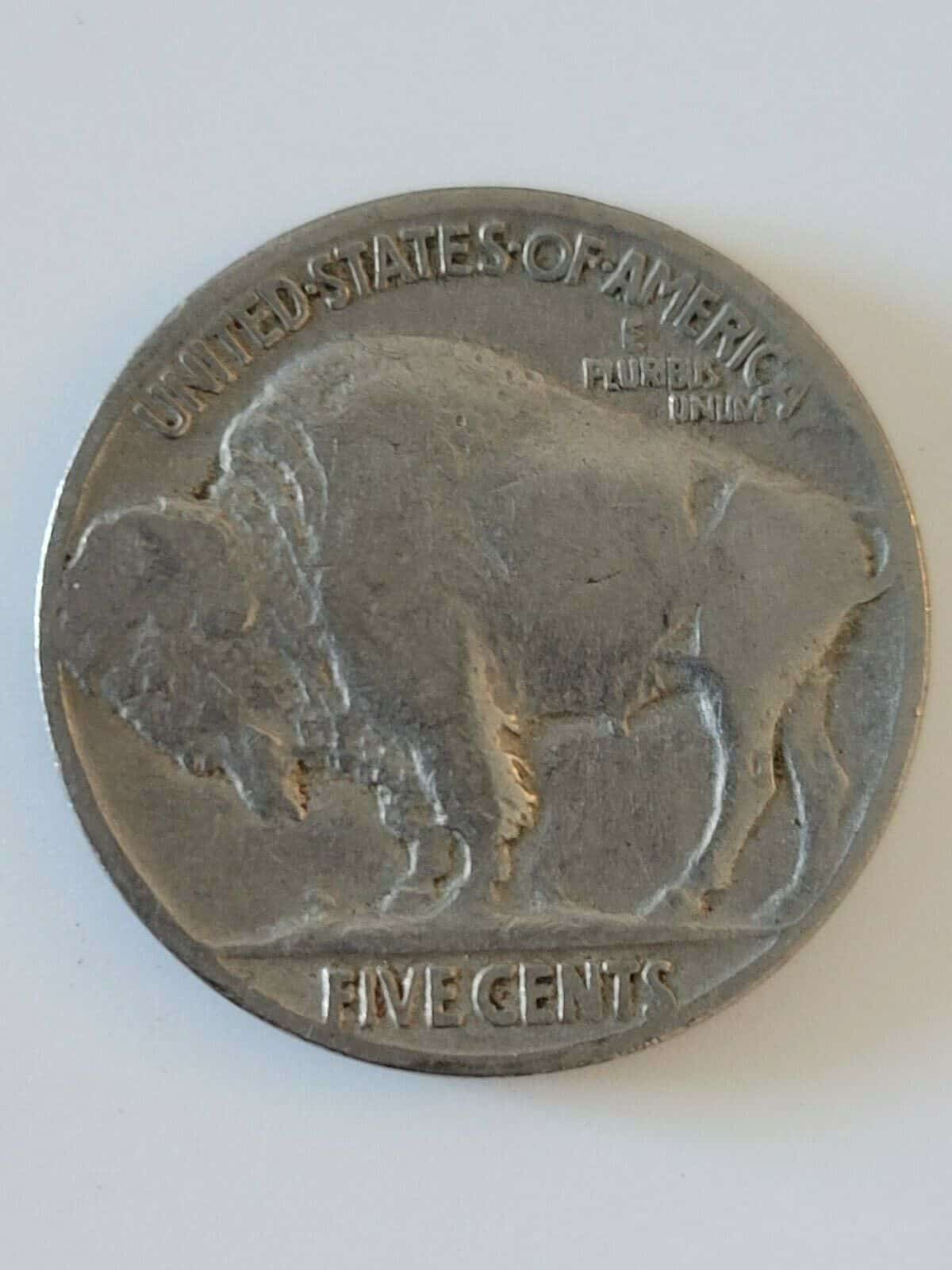
The 1937 buffalo nickel is the second last coin in the buffalo nickel series. This series of nickels was first minted in 1913 and continued to be minted until 1938. It succeeded the Liberty Head Nickel/V nickel that was officially minted from 1883 to 1912.
Also, it preceded the Jefferson nickel that was launched in 1938 and is still being produced to date. If there’s one thing that you need to know about the buffalo nickel, it’s that it gets its name from its reverse design.
This features the image of an American buffalo facing left. This buffalo stands on a piece of flat ground below which there is a “FIVE CENTS” engraving. Keep in mind that the first design that was minted had the buffalo standing on a hill.
Also, it had a smaller “FIVE CENTS” engraving. However, the mint noticed that the area around this engraving and the hill experienced a lot of wear. This made the mint chief engraver at the time, Charles Barber, suggest modifications the same year.
Fortunately, the coin’s designer, James Earle Fraser, agreed to these modifications. The new coins minted are called 1913 Type II buffalo nickels and the original ones are 1913 Type I buffalo nickels.
The Type II design was used until buffalo nickels were discontinued. Like the Type I nickels, they had the legend “UNITED STATES OF AMERICA” along the coin’s top rim. They also had the motto “E PLURIBUS UNUM” engraved below that legend.
The buffalo nickel’s obverse also has an interesting design. Its main feature is an image of a Native American man’s head facing right. This is why this coin is also known as the Indian Head nickel.
It’s said that Fraser came up with this design by creating a composite of the features of several Native American chiefs. As such, the image on the coin is realistic. The featured man has his hair in a braid and two feathers in it.
Beyond that, there’s a date inscription at the base of his neck where a fabric covers him. Under this date, the letter F is written, an initial representing the designer’s last name.
Another noticeable feature of the buffalo nickel’s obverse is the word “LIBERTY” written on its side rim. This starts near the Native American man’s forehead and ends near his nose’s ridge.
Keep in mind that buffalo nickels all have the same shape, size, look, mass, and composition. They are round coins with a diameter of 21.2 mm and a plain smooth edge. More importantly, they are made of 75% copper and 25% nickel, giving them a mass of 5 grams.
These coins were minted at the Philadelphia, Denver, and San Francisco facilities, even the 1937 ones. All three mints produced almost 103 million 1937 buffalo nickels, most of which were from the Philadelphia facility.
Of these, 79.48 million were regular strike coins and 5,769 were proofs. None of these had mint marks. Since the regular strike coins have the second-highest mintage of the buffalo nickel series, they are readily available today at affordable prices.
Those in the good grade can go for around $1.5 per piece while an MS67 sells for around $340. But prices go up at MS68. One can go for $9,000. An MS68+ can sell for $27,500.
On the other hand, proofs are rarer and go for higher in pristine condition. A PR68 proof sells for around $6,500 per piece while a PR69 can even go for $42,500.
This can be attributed to the fact that they’re approximately only 3,666 of these proofs left with a grade of MS65 and above. Keep in mind that only 5,000 proofs remain across all grades and around 4,866 of these have a grade of MS60 and higher.
1937 “D” Buffalo Nickel Value
The second largest mintage of 1937 buffalo nickels was produced at the Denver mint. This had 17,826,000 pieces. Each one had a “D” mint mark on its reverse side under the inscription “FIVE CENTS”, directly below the space between the two words.
1937 D buffalo cents that are MS67 and below are usually as cheap as their Philadelphia regular strike counterparts or just a little more pricey. But they can be substantially more expensive at MS68. One can sell for as high as $22,500.
This is because they’re only around 8,000 1937 D buffalo nickels left today with a grade of MS65 and higher. On the other hand, there are around 16,000 1937 similar regular-strike Philadelphia buffalo nickels.
Ultimately, there are more regular strike Philadelphia nickels left today across all grades. These are around 50,000 while 1937 D nickels left across all grades are around 35,000.
While this hasn’t made the latter super rare, some unique varieties of the 1937 D buffalo nickel are. One popular one is the 1937 D three-legged buffalo nickel.
As its name suggests, this variety features a buffalo with three legs instead of four. Its existence is usually attributed to an accident in the Denver mint.
It’s said that a mint employee called Mr. Young polished the reverse die while trying to remove marks from it, making the design of one of the buffalo’s legs faint. As such, all the coins that were struck after this lacked one leg.
By the time the mint figured out what happened and replaced the faulty die, thousands of these coins had been circulated. It’s estimated that 10,000 of these coins still exist today across all grades.
Experts believe that 1,400 of these have a grade of MS60 and higher and only 100 have a grade of MS65 and higher. As such, an MS60 sample sells for around $2,900 while an MS67 goes for around $150,000.
To tell whether a 1937 D three-legged buffalo nickel is genuine, look for a stream-like appearance under the buffalo’s belly. Also, ensure that the missing leg is the front one and that the back one has a moth-eaten appearance.
Keep in mind that the hoof of the missing leg may be visible.
1937 “S” Buffalo Nickel Value
The San Francisco mint produced 5,635,000 1937 buffalo nickels. These were all regular-strike coins. Each had an “S” mint mark on its reverse side, just below the engraving “FIVE CENTS”, directly beneath the space between the two words.
It’s estimated that around 40,000 of these coins still exist across all grades. 12,000 of these have a grade of MS60 and higher while 9,000 have a grade of MS65 and higher. This makes them almost as rare as their Denver counterparts.
As such, these coins usually cost around the same price as them. A circulated sample usually sells for $1 to $29. On the other hand, an MS66+ sample can fetch $225. Prices hike after this grade though.
An MS67 goes for around $1,000 while an MS67+ and MS68 sell for up to $7,000 and $20,000 respectively.
Interestingly, these are the last buffalo nickels to be minted in San Francisco. The next nickels produced here were the 1938 Jefferson nickels; these were minted in Philadelphia and Denver as well.
The 1938 buffalo nickels were only minted in Denver. These were the last buffalo nickels ever and were a little over 7 million pieces. Some of these coins belong to a variety called the 1938 D/S buffalo nickels. These coins have a D mint mark punched over an S one.
Two collectors called C.G Langworthy and Robert Kerr discovered these coins in 1961. It’s theorized that they were created when dies that were meant for the San Francisco facility ended up being sent to the Denver one.
This was likely to keep them from being wasted. Experts estimate that around 20,000 of these coins still exist today across all grades, 7,000 of which have a grade of MS60 and higher. 6,000 of these have a grade of MS65 and higher.
1937 Buffalo Nickel Grading
Grading 1937 buffalo nickels requires expertise that many collectors don’t have. That’s why it’s advisable to send potential super valuable samples to professional agencies like PCGS and NGC. This will ensure that you get maximum profit on your sale.
However, since professional grading requires paying a fee, it’s best to avoid it when dealing with 1937 buffalo nickels that are noticeably worn out. Since you’ll only get a few dollars for such anyway, it makes more sense to sell them ungraded.
Rare 1937 Buffalo Nickel Error Lists
1937 Buffalo Nickel S/S/S Repunched Mint Mark
A coin with a repunched mint mark (RPM) error has the same mint mark appearing more than once. Most times, these images overlap. An S/S/S RPM has the S mint mark appearing thrice.
This error usually makes a coin more valuable. For instance, an MS65 1937 S/S/S RPM buffalo nickel can sell for over $150.
1937 Buffalo Nickel D/D RPM
A repunched mint mark error can also appear on the 1937 D buffalo nickel. When this error has one D mint mark on top of another, it’s known as a D/D RPM. An MS65 1937 buffalo nickel with this error can sell for over $185.
1937 Buffalo Nickel FAQ
What makes a 1937 Buffalo Nickel valuable?
The main things that make a 1937 buffalo nickel more valuable are its mint mark, errors, and variety. If it belongs to a unique variety like the 1937 D three-legged buffalo nickel and has a couple of errors, it will be super rare and expensive.
Proofs are also rarer than regular strikes and more expensive.
Is a 1937 Buffalo Nickel made of silver?
No, these coins don’t have any silver; none of the buffalo nickels have this. Instead, they contain nickel and copper.
How do I know if my Buffalo Nickel is valuable?
To ensure that you have a valuable buffalo nickel, go to a coin dealer or another coin expert. They will look at your coin and give you a clear assessment. But this can only work if your coin has its date intact.
Dateless nickels usually only go for around 6 cents, and the people who buy them tend to use them for DIY projects. Because of this, people with these coins sometimes even go as far as placing them in acid to reveal their dates.
What rare nickel sells for 4.2 million?
This is the 1913 Liberty Head nickel that was sold in 2022 to a California coin company. This coin type is extremely rare; only 5 of these coins have been found to date.
What is a black beauty nickel?
This is a nickel that looks black because of improper annealing. The annealing process involves heating a planchet to make it more malleable.
